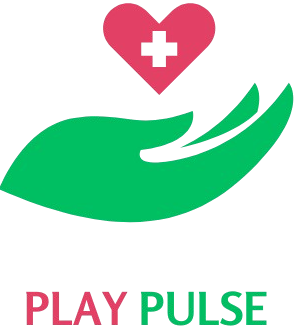In the realm of therapeutic practices, trip massage stands out as a unique blend of traditional techniques and modern wellness approaches. This article explores the fundamentals of trip massage, including its origins, techniques, benefits, and how it can enhance 밤전 your overall well-being.
What is Trip Massage?
Trip massage is a specialized form of therapeutic massage that combines various techniques to offer a comprehensive approach to relaxation and health. Derived from the Thai term “Thip,” meaning “to press” or “apply pressure,” trip massage integrates elements from traditional Thai massage with contemporary methods. This fusion aims to address both physical and mental health, providing a holistic experience.
Historical Background
The practice of trip massage has deep roots in traditional Thai massage, a healing art with over 2,500 years of history. Thai massage itself is influenced by Indian, Chinese, and Southeast Asian traditions, incorporating techniques such as acupressure, stretching, and energy work.
Trip massage represents an evolution of these ancient methods. By blending traditional Thai techniques with modern therapeutic practices, trip massage adapts ancient healing arts to meet the needs of contemporary individuals seeking wellness and relaxation.
Techniques Used in Trip Massage
Trip massage employs a variety of techniques, each contributing to its overall therapeutic benefits:
- Acupressure: This technique involves applying pressure to specific points on the body, known as acupoints. These points correspond to different organs and systems within the body. Stimulating these acupoints helps relieve tension, improve circulation, and support the body’s natural healing processes.
- Stretching: Gentle stretching is an integral part of trip massage. These stretches aim to increase flexibility, reduce muscle tightness, and improve the range of motion. Stretching also helps alleviate stiffness and enhances overall mobility.
- Deep Tissue Massage: This technique targets deeper layers of muscle and connective tissue. By using firm pressure and slow strokes, deep tissue massage addresses chronic pain and muscle stiffness, providing relief to areas of persistent discomfort.
- Foot Reflexology: Foot reflexology involves applying pressure to specific points on the feet that correspond to various organs and systems in the body. This technique promotes relaxation and balance by stimulating these reflex points.
- Energy Work: Drawing from traditional Thai practices, trip massage may include techniques designed to balance the body’s energy flow. This can involve rhythmic movements, gentle touch, or other methods to harmonize energy channels and enhance overall wellness.
Benefits of Trip Massage
Trip massage offers a wide range of benefits that contribute to both physical and mental well-being:
- Stress Relief: The combination of techniques used in trip massage helps alleviate stress and promote relaxation. By reducing muscle tension and calming the mind, trip massage creates a soothing effect that enhances overall well-being.
- Enhanced Flexibility and Mobility: The stretching and muscle release techniques used in trip massage improve flexibility and range of motion. This is particularly beneficial for individuals experiencing stiffness or limited movement.
- Effective Pain Management: Trip massage can provide relief from chronic pain, muscle soreness, and tension. Techniques such as deep tissue massage address underlying muscle issues, offering effective pain management.
- Improved Circulation: The massage techniques used in trip massage promote better blood flow and circulation. Enhanced circulation supports the delivery of oxygen and nutrients to tissues, aiding in overall health and recovery.
- Increased Energy Levels: By balancing energy flow and reducing physical and mental tension, trip massage can boost energy levels and vitality. This increase in energy contributes to improved daily functioning.
- Better Sleep Quality: Regular sessions of trip massage can lead to improved sleep quality by promoting relaxation and reducing stress. Better sleep supports overall health and enhances daily performance.
Practical Considerations
To make the most of your trip massage experience, consider these practical tips:
- Consult a Professional: Before starting trip massage, especially if you have underlying health conditions or specific concerns, consult with a healthcare professional. A qualified therapist can tailor the session to your individual needs and ensure safety.
- Communicate Openly: Effective communication with your massage therapist is crucial. Inform them about any areas of discomfort, medical conditions, or specific preferences so they can adjust the techniques accordingly.
- Stay Hydrated: After a trip massage session, drink plenty of water. Staying hydrated helps flush out toxins and supports the body’s natural recovery processes.
- Allow Time for Rest: Give your body time to rest and recover after a trip massage. This helps ensure that you fully benefit from the therapeutic effects of the session.
- Avoid Certain Conditions: If you have specific medical conditions, such as severe cardiovascular issues or recent injuries, you may need to avoid certain techniques. Always discuss any concerns with your therapist beforehand.
Conclusion
Trip massage is a versatile and holistic therapeutic practice that merges traditional techniques with modern wellness approaches. By incorporating acupressure, stretching, deep tissue massage, foot reflexology, and energy work, trip massage offers a comprehensive solution for relaxation, pain relief, and overall well-being. Whether you seek to alleviate stress, enhance flexibility, or boost energy levels, trip massage can be a valuable addition to your self-care routine. As with any therapeutic practice, consulting with a professional and maintaining open communication about your needs will ensure a safe and beneficial experience.

